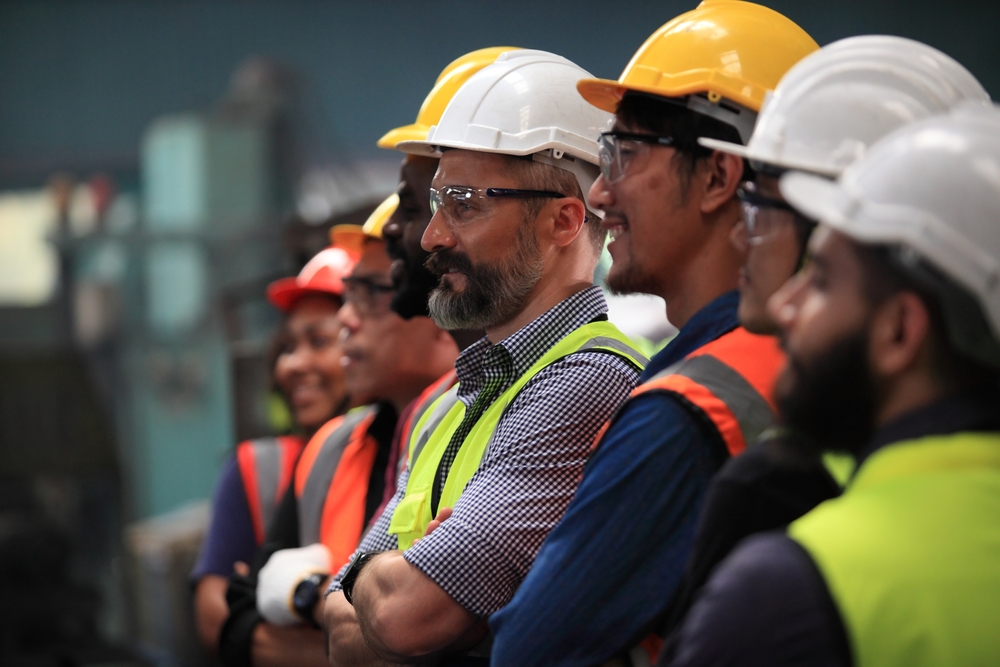A workplace accident can take just a few seconds. But those brief incidents have a major impact on the U.S. economy.
Employers reported 2.3 million workplace injuries in 2022. The direct costs associated with those incidents—worker’s compensation claims and related medical and legal expenses—add up to $1 billion a week. That’s not counting the indirect costs, such as lost time, retraining, hiring replacement employees, repairing damaged property and equipment, and the potential impact on the company’s reputation.

Effective safety training can significantly reduce the risk of workplace incidents, protecting employees and mitigating losses related to on-the-job accidents and injuries. An investment in safety training keeps facilities maintenance teams up to date with the latest skills they need and ensures compliance with current safety standards and regulations.
Benefits
Here are a few ways safety training helps facilities maintenance teams reduce risk and costs:
- Accident and injury prevention: Safety training prepares maintenance engineers to identify potential risks and take steps to mitigate them. Understanding critical safety procedures and best practices, such as lockout/tagout processes, electrical safety, fire safety, and fall prevention, helps reduce the incidence of accidents and injuries on the job.
- Compliance: Local, state, and federal regulatory standards are always evolving. Consistent expert training is the best way to ensure employees are always up to date on the latest guidelines and regulations.
- Efficiency: Reducing accidents and injuries can save companies significantly when it comes to lost work time, compensation claims, and additional administrative tasks. Fewer accidents and injuries mean less downtime or lost workdays. And when employees know how to perform work safely and correctly, they can often do it in less time and, importantly, do it correctly the first time. The time saved on rework can be redirected towards more productive tasks, increasing overall operational efficiency.
- Employee morale and engagement: When employees feel like the company they work for values their well-being, they’re more likely to be productive, efficient, engaged, and accurate. Additionally, investing in training programs that promote safety and increase workers’ skills can be a powerful tool for attracting and retaining employees. A well-trained workforce is more likely to feel valued and motivated, leading to increased job satisfaction and employee retention. By investing in employees, companies build a reputation as an employer of choice, reducing recruitment costs and employee turnover.
Training is essential to a safe workplace. But developing and maintaining an effective training program to meet the needs of today’s evolving employee expectations can be challenging. A committed investment in a safety-first workplace, focused on continuous training using innovative, flexible solutions, protects team members and their organizations—and ensures streamlined productivity.
Digital Solutions
Immersive, accessible digital safety training solutions can provide unique advantages in the modern workplace. Learners can engage with proven, expert-led training material at their own pace, on a variety of devices, wherever they are—at the office, at home, or even between jobs. These platforms can even serve as resources for jobsite troubleshooting, helping users find the information they need to safely complete tasks when they need it. Skills assessments and other features allow employers to track employees’ progress and match their assigned work to their current skill level.
Flexible digital learning solutions featuring expert-led video courses, hands-on 3D simulations, skills assessments, and custom learning paths allow employers to:
- Train anytime, anywhere: Reach more workers faster with consistent training that covers all employees. There’s no need to take people off the job and get them in the same room for safety training. They can easily train in their downtime using a phone, tablet, or computer.
- Keep employees engaged: Make learning fun with online video-based safety training that’s short, entertaining, and easy to understand.
- Stay compliant: Ensure employees are completing and understanding their training by assigning specific courses, using built-in quizzes, and tracking progress.
- Succeed on the job and on the road: Equip your employees with the necessary skills to be safe and secure while driving on the job, minimizing the risk of accidents and injuries.
Safety training should be a strategic investment in your organization’s success. Accidents and injuries not only jeopardize the well-being of employees but also have significant financial and operational implications for businesses. By prioritizing employee safety, mitigating risks, and fostering a strong work culture, facilities maintenance organizations can create a resilient and efficient work environment that benefits both the workforce and the bottom line.
A serious workplace safety incident with life-changing consequences can occur in the blink of an eye. Planning ahead and preparing maintenance teams to manage risk takes time and effort, but it’s an investment that pays off—for you and your employees.
Dan Clapper is the commercial HVAC and facilities maintenance market director for Interplay Learning, a provider of online and VR training for the essential skilled trades. He has more than 25 years of experience in HVAC service and installation, wholesale sales and distribution, and manufacturer training.
